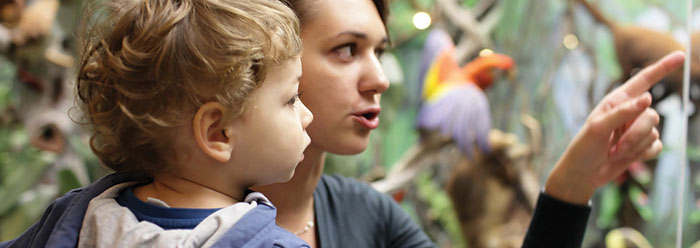Summer’s a great time to visit fun learning places, and until the ICR Discovery Center for Science and Earth History is completed, we’d like to help you and your family get the most out of your summertime travels. Museums, historical sites, and science camps specialize in providing exciting educational experiences. There’s so much to see and learn, so prepare before you set out on your adventures.
Here are 10 things you can do to help your children get the most out of your family field trip.
- Learn foundational information before you go. Read and watch videos about some of the artifacts, exhibits, and displays your family will encounter.
- Challenge your children to find specific things at the facility. Ask them to look for answers to questions, information about certain topics, or displays that illustrate unique interests.
- Plan the itinerary but be willing to make adjustments to your schedule. Be sure to allow enough time at the exhibits your children are most interested in. If there’s a planetarium, 3-D movie, or speaker presentation, purchase tickets ahead of time and arrange your schedule around those events.
- Plan fun activities to make the trip more memorable. Perhaps a scavenger hunt or playing I-Spy—finding items in the displays—will help engage their minds. Provide a passport (prepared beforehand) for young children to mark along the way as they visit the places.
- Participate in activities at interactive exhibits. Pushing, pulling, throwing, running, climbing—anything involving large-muscle movement. This is especially important for younger visitors. Even older children can participate in problem-solving challenges and push buttons, touch screens, pull levers, and try puzzles that test their limits.
- Don’t rush. Plan plenty of time to pause, observe, and reflect.
- Encourage critical thinking and questioning. This especially makes sense when you encounter evolutionary teaching and Darwinian exhibits. Encourage your children to ask questions. What doesn’t make sense? What conflicts with information you’ve already learned? How would you present the information in a more accurate way? Can you find errors in the displays? How do the exhibits show bias? In what ways do the displays mislead the observers? What’s right or wrong with this picture? What does the Bible say?
- Limit the use of electronic devices unless it’s to take pictures (if photography is allowed). Photos and videos will allow your family to re-read helpful information, remind them of interesting facts, and provide a reference for later study.
- When you return home, have them do something with what they learned: write a journal entry, article, or paper; prepare a social media post; put together a short video clip; create a photo or video presentation.
- Plan a return trip to discover more.
We look forward to the day we can greet you at the ICR Discovery Center doors. Until then, you can go on a virtual tour of the facility in this month’s feature article, “Discover ICR” (Dr. Henry Morris III). Thank you for partnering with us. Please continue to pray and financially support this project as you are able. We are so excited that soon we’ll have a place for you to bring your children and grandchildren to learn more about science and Earth history from a biblical perspective. We hope you have safe summer travels with fun, accurate learning along the way!
* Jayme Durant is Director of Communications at the Institute for Creation Research.




